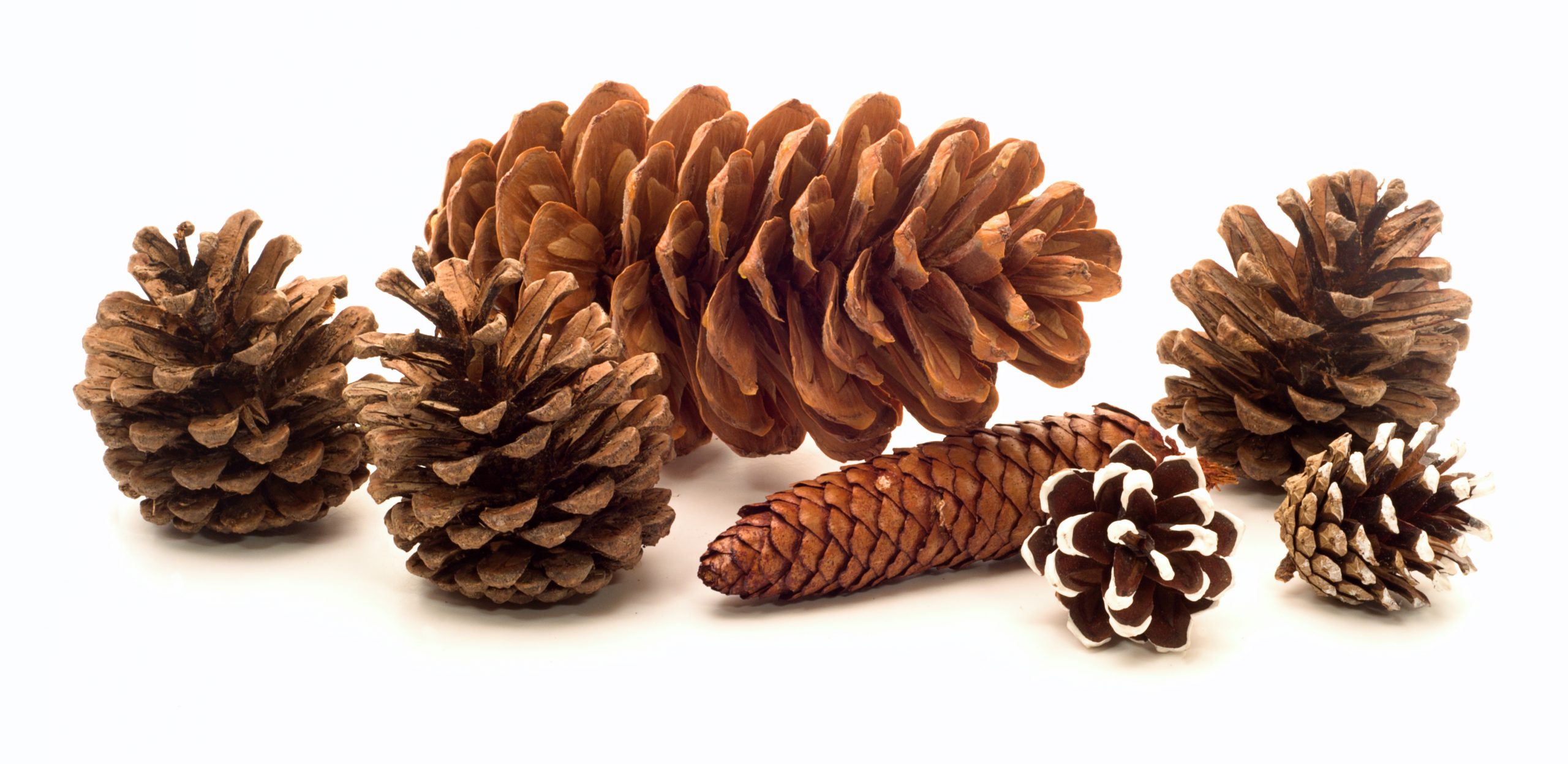We kick them out of our way, we run over them with our cars, and we trip over them. Occasionally, we appreciate their elegance, and decorate our homes with them. Mostly we just ignore them.
Big or small, on the tree, or in your driveway, the ubiquitous Tahoe pine cones are just trying to do their job. And that is to safeguard the seeds they carry until conditions are right for growth. Then the pine cones open their scales, releasing the seeds to germinate.
All pine trees are botanically classified as gymnosperms because they do not flower or fruit. Instead, they grow cones to contain their seeds. The word, gymnosperm, is derived from Greek and literally means naked seed.
Every pine cone you see is female — every single one. Unless you are a dedicated tree climber, you’ll probably never meet the much smaller, softer male cone. The evidence of their existence is your outdoor furniture’s color change. Every spring and early summer, the male pine cones release their yellow-green pollen, which then covers and colors everything in the Tahoe basin. A local newspaper once called the deluge magic pollen dust, and to a pine cone, it is magic.
On many pine trees, the male and female cones grow on different branch types. Females grow mainly on the higher almost vertical branches, while the males usually grow on lateral branches, in the middle and lower parts of the tree crown.
Almost all of Tahoe’s pine trees produce cones about 6 to 10 inches long. The champion of local pine cone production is the Sugar Pine. The tallest of the pine trees, the Sugar Pine cones can reach almost 2 feet long, and weigh as much as 2 pounds. What would happen if that kind of pine cone fell from a high branch, and bounced off the roof of your car? Never, ever park under a Sugar Pine tree.
As big and impressive as the Sugar Pine cone is, it’s nothing compared to what a Coulter pine produces. Coulter pines, native to the Southern California and Baja, Mexico mountains, take the prize. Their pine cones have been called widow-makers. Imagine being hit by a falling pine cone weighing as much as 11 pounds, featuring talon-like scales, all covered in a thick, sticky resin. Some pine cone! Some nickname!
Like the Coulter pine, Pinyon pines do not grow in the Tahoe basin. They are native in the Truckee Meadows, though. Pinyon pine cones are the source of pine nuts, loved by bears, squirrels, quail, and people alike. In fact, the tree’s scientific name, pinus edulis is Latin for edible pine. Indigenous people used pinion pine cones in more than one way. They ate the nuts raw, or roasted them. They ground the nuts into flour, and even made a tea from the needles of the tree. Pinyon pines have been called a quintessential part of the American West.
Pine cones may be a nuisance, and on occasion, are downright dangerous, but they are here and serve an important purpose. Just remember, in autumn watch your step, and cover your head.


 Facebook
Facebook
 Twitter
Twitter
 Pinterest
Pinterest
 Copy Link
Copy Link
